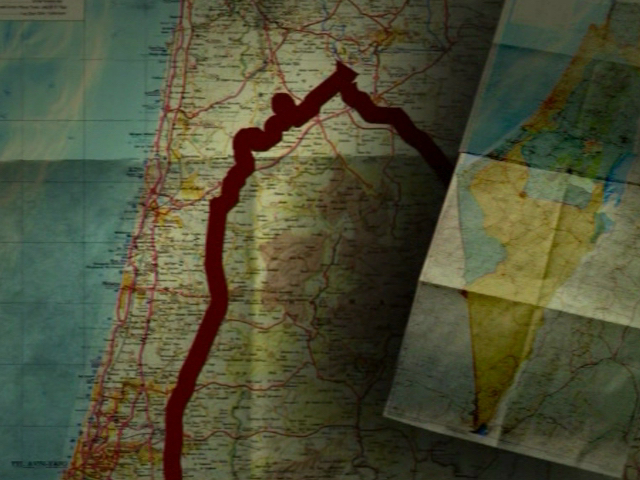
“When he filmed Route 181: Fragments of a Journey in Israel-Palestine (2004) together with Eyal Sivan, an Israeli director, he was reminded of a lesson from Jean-Luc Godard, that they were there to receive and not impose. Together, with love for their country and people, and for a history that is shared not divided, they set out for two months in the summer of 2002 to film. They agreed to have the same approach to everyone they’d interview, Palestinians and Israelis regardless of religion, along the green line – Route 181, named by the UN’s peacekeeping treaty that split the land in two. With that anecdote, my travelling master class with Khleifi had begun. To film with love and with openness was the first lesson of the day.”
Rebecca Jane Arthur1
“Despite the tribal allegiances imposed on us, which we reject, and armed with our common experience, we decided to return to our country. By doing so, we wanted to unveil the geographic and mental reality in which the men and women of Palestine-Israel are living today. The demarcation line of the Partition Plan for Palestine, drawn up and voted by the UN in 1947, was the starting point of our film. For us, it represented both a documentary challenge and promises of a rich human adventure. Along this demarcation line, which does not in fact exist, we wanted to film, in a particular way, men and women, places, all previously unseen. During these chance meetings, we listened together to the varying sounds of people, to their passions and disillusionment. We provoked – in us but also in our interlocutors – a relationship of love in response to a daily reality saturated with danger and overwhelmed by death. The voices of those forgotten by official discourse will we hope, be heard – the voices of those who nonetheless constitute the majority in both societies, those in whose name wars are fought. We wished to construct a film which resists the idea that the only thing Israelis and Palestinians can do together is fight wars until they are both driven to oblivion.”
Michel Khleifi & Eyal Sivan2
“The film was vehemently attacked by Lanzmann and a few of his befriended intellectuals – the same ones who, today, are keen to charge the Left with the responsibility for the terror haunting the French street – who accused the film of profanation. In particular, they alluded to a scene in which a Palestinian barber recounts the massacre of the Arabs of Lod during the 1948 war, a scene which resonates with the famous barber scene in Lanzmann’s Shoah. They blamed the film for drawing an analogy between the fate of the Jews under Nazism and the fate of the Palestinians from 1947 to the present day. This analogy, they claimed, subverts the uniqueness of the event, to which only the mise-en-scène of Lanzmann’s film is deemed adequate: only through the suspension of representation can its single truth be conveyed, only through the words and silences of the witness can the lie of the image be overcome. To the unicity of the Real can only respond the ethical law of the unrepresentable.”
Stoffel Debuysere3
- 1Rebecca Jane Arthur, “Nearby,” Sabzian, 2018.
- 2Michel Khleifi & Eyal Sivan, production notes.
- 3Stoffel Debuysere, Figures of Dissent: Cinema of Politics, Politics of Cinema, (Gent: AraMER, 2016), 88.

